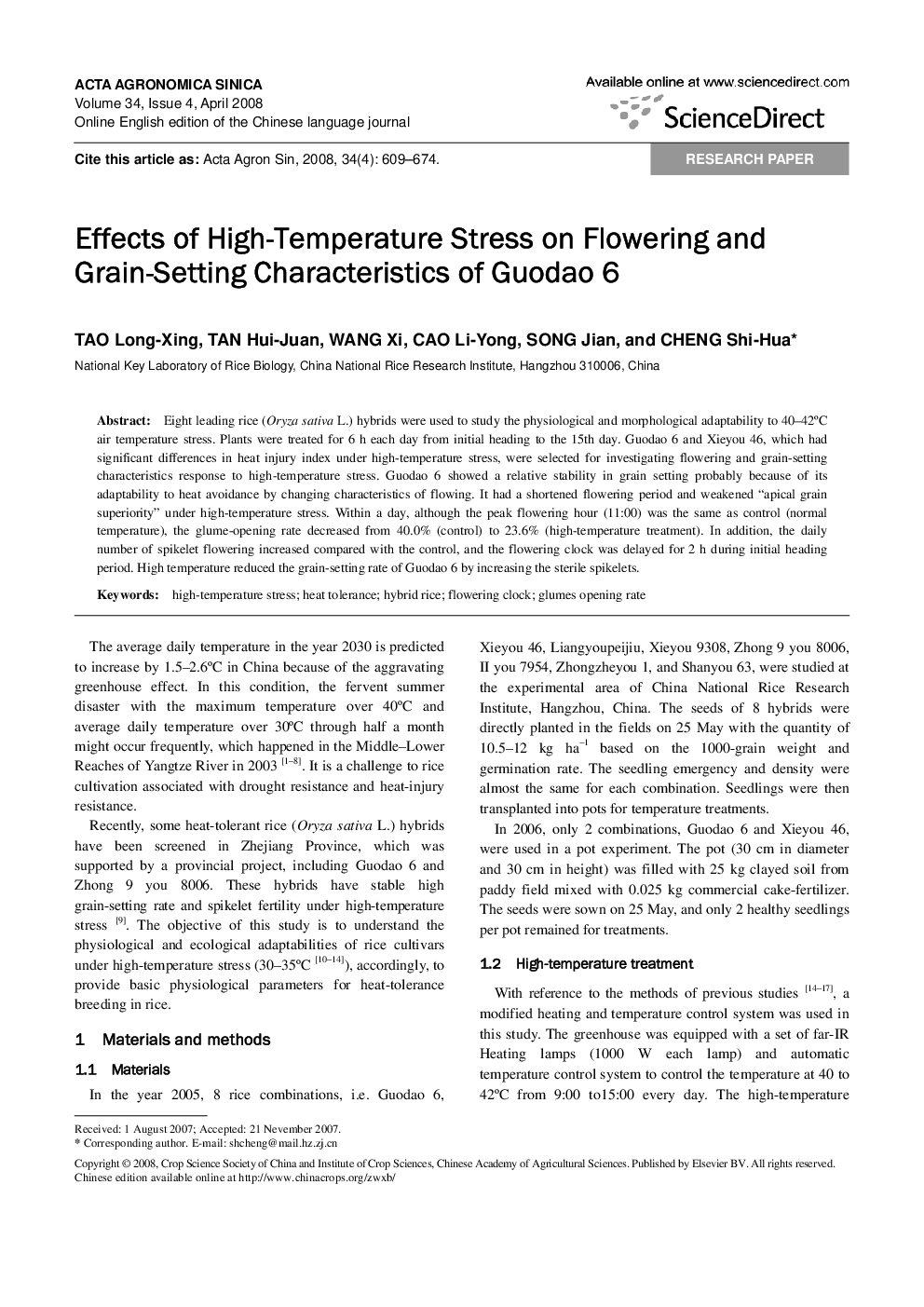| Article ID | Journal | Published Year | Pages | File Type |
|---|---|---|---|---|
| 4503494 | Acta Agronomica Sinica | 2008 | 66 Pages |
Eight leading rice (Oryza sativa L.) hybrids were used to study the physiological and morphological adaptability to 40–42°C air temperature stress. Plants were treated for 6 h each day from initial heading to the 15th day. Guodao 6 and Xieyou 46, which had significant differences in heat injury index under high-temperature stress, were selected for investigating flowering and grain-setting characteristics response to high-temperature stress. Guodao 6 showed a relative stability in grain setting probably because of its adaptability to heat avoidance by changing characteristics of flowing. It had a shortened flowering period and weakened “apical grain superiority” under high-temperature stress. Within a day, although the peak flowering hour (11:00) was the same as control (normal temperature), the glume-opening rate decreased from 40.0% (control) to 23.6% (high-temperature treatment). In addition, the daily number of spikelet flowering increased compared with the control, and the flowering clock was delayed for 2 h during initial heading period. High temperature reduced the grain-setting rate of Guodao 6 by increasing the sterile spikelets.
